Extraction
How to submit an article:
- Registered users can submit any published journal article that has a unique DOI (Digital Object Identifier) name or link to Research Hub.
- For example, you can paste the full DOI link:
https://doi.org/10.1109/5.771073or just the DOI name:10.1109/5.771073into the field above and click submit. - The person who is first to submit a valid article to Research Hub will forever be credited for it, and every article submission earns you +6 Research Points.
Related Topics
Published research studies are articles that present the findings of original research that has undergone a peer-review process and has been made publicly available in scholarly journals, books or other media.
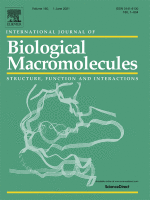
Extraction, structural-activity relationships, bioactivities, and application prospects of Pueraria lobata polysaccharides as ingredients for functional products: A review
2023 Jul International Journal of Biological Macromolecules Wang J, Dai G, Shang M, Wang Y, Xia C, Duan B, et al.
It was found that PLPs possess various bioactivities, including antioxidation, antidiabetic, immunomodulatory, hypolipidemic, antibacterial activities, regulation of intestinal flora, etc. The linkage patterns of glycosidic bonds might influence the bioactivities of PLPs. Meanwhile, PLPs have great development prospects in the health food and medical industries due to their non-toxicity. These discoveries establish a solid foundation for expanding the application and investigations of PLPs.
Review Article Ge Gen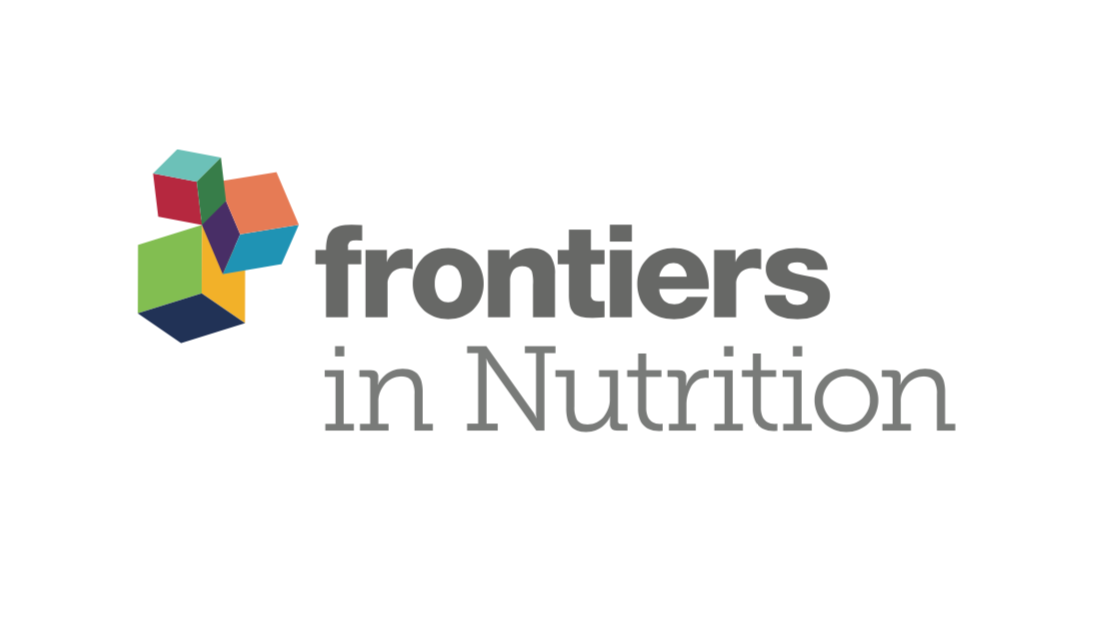
An analysis of the nutritional effects of Schisandra chinensis components based on mass spectrometry technology
2023 Jul 25 Frontiers in Nutrition Jia M, Zhou L, Lou Y, Yang X, Zhao H, Ouyang X, et al.
The review highlights the potential nutritional effects of S. chinensis, including its role in enhancing immunity, acting as an antioxidant, anti-allergen, antidepressant, and anti-anxiety agent, as well as its ability to improve memory, cognitive function, and metabolic imbalances. Advanced mass spectrometry detection technologies have the potential to discover new nutritional components and verify the effects of different extraction methods. This review provides guidelines for further research on the nutritional value of S. chinensis and the development of healthy food products.
Review Article Wu Wei Zi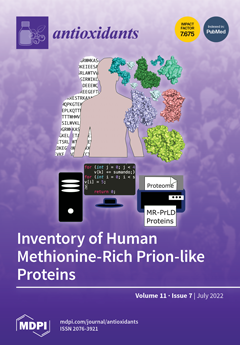
An Overview of the Health Benefits, Extraction Methods and Improving the Properties of Pomegranate
2023 Jun 27 Antioxidants Benedetti G, Zabini F, Tagliavento L, Meneguzzo F, Calderone V, Testai L
Review Article Cardiovascular DiseasePomegranate and its components could offer considerable potential as dietary supplements or supports in treatment for cardiovascular and non-cardiovascular diseases.

Extraction, purification, structure characteristics, biological activities and pharmaceutical application of Bupleuri Radix Polysaccharide: A review
2023 May International Journal of Biological Macromolecules Yu X, Miao Z, Zhang L, Zhu L, Sheng H
The review systematically summarizes the research progress in the extraction, purification, structure characteristics, biological activities, structure-activity relationship and pharmaceutical applications of BRP, and discusses the deficiencies of the current research on some aspects of BRP, which can provide a basis for further study on BRP.
Review Article Chai Hu
The Extraction and High Antiproliferative Effect of Anthocyanin from Gardenblue Blueberry
2023 Mar 22 Molecules Zhao F, Wang J, Wang W, Lyu L, Wu W, Li W
Experimental Study BlueberryThe anthocyanins from the Gardenblue variety of blueberries exhibit strong antiproliferative effects on various cancer cells, especially liver cancer cells.
Research insights are moderated by the Research Hub team and offer an at-a-glance overview of interesting research findings.

2023 Antioxidants
Pomegranate and its components could offer considerable potential as dietary supplements or supports in treatment for cardiovascular and non-cardiovascular diseases.
Review Article Cardiovascular Disease
An Overview of the Health Benefits, Extraction Methods and Improving the Properties of Pomegranate
Benedetti G, Zabini F, Tagliavento L, Meneguzzo F, Calderone V, Testai L

2023 Molecules
The anthocyanins from the Gardenblue variety of blueberries exhibit strong antiproliferative effects on various cancer cells, especially liver cancer cells.
Experimental Study Blueberry
The Extraction and High Antiproliferative Effect of Anthocyanin from Gardenblue Blueberry
Zhao F, Wang J, Wang W, Lyu L, Wu W, Li W

2022 Applied Food Research
Saffron plant's various parts contain bioactive compounds that, when extracted using innovative techniques, show significant potential for use in food, nutraceutical and drug formulations.
Review Article Bioactive Compounds Encapsulation Saffron
Bioactive constituents of saffron plant: Extraction, encapsulation and their food and pharmaceutical applications
Bakshi RA, Sodhi NS, Wani IA, Khan ZS, Dhillon B, Gani A
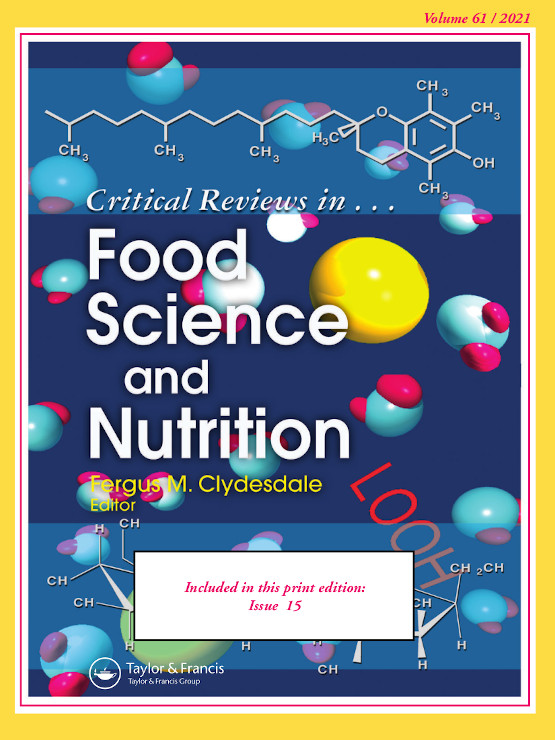
2022 Critical Reviews in Food Science and Nutrition
Modern extraction techniques improve the extraction of bioactive compounds from black soybeans, which have potential use in functional foods and nutraceutical components.
Review Article Black Soybean
Black soybean (Glycine max(L.) Merr.): paving the way toward new nutraceutical
Kumar M, Suhag R, Hasan M, Dhumal S, Radha , Pandiselvam R, et al.
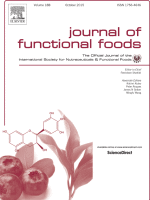
2019 Journal of Functional Foods
Consumption of virgin avocado oil, rich in monounsaturated fatty acids and bioactive components, may help manage chronic diseases like hypertension, diabetes, and lower cardiometabolic risk.
Systematic Review Avocado Oil Fatty Liver Disease High Blood Pressure Hypercholesterolemia Type 2 Diabetes
Virgin avocado oil: An emerging source of functional fruit oil
Tan CX
Review Articles
Review articles summarise and critically evaluate the current state of research on a specific topic or field by synthesising multiple primary research studies.

Extraction, structural-activity relationships, bioactivities, and application prospects of Pueraria lobata polysaccharides as ingredients for functional products: A review
2023 Jul International Journal of Biological Macromolecules Wang J, Dai G, Shang M, Wang Y, Xia C, Duan B, et al.
It was found that PLPs possess various bioactivities, including antioxidation, antidiabetic, immunomodulatory, hypolipidemic, antibacterial activities, regulation of intestinal flora, etc. The linkage patterns of glycosidic bonds might influence the bioactivities of PLPs. Meanwhile, PLPs have great development prospects in the health food and medical industries due to their non-toxicity. These discoveries establish a solid foundation for expanding the application and investigations of PLPs.
Review Article Ge Gen
An analysis of the nutritional effects of Schisandra chinensis components based on mass spectrometry technology
2023 Jul 25 Frontiers in Nutrition Jia M, Zhou L, Lou Y, Yang X, Zhao H, Ouyang X, et al.
The review highlights the potential nutritional effects of S. chinensis, including its role in enhancing immunity, acting as an antioxidant, anti-allergen, antidepressant, and anti-anxiety agent, as well as its ability to improve memory, cognitive function, and metabolic imbalances. Advanced mass spectrometry detection technologies have the potential to discover new nutritional components and verify the effects of different extraction methods. This review provides guidelines for further research on the nutritional value of S. chinensis and the development of healthy food products.
Review Article Wu Wei Zi
An Overview of the Health Benefits, Extraction Methods and Improving the Properties of Pomegranate
2023 Jun 27 Antioxidants Benedetti G, Zabini F, Tagliavento L, Meneguzzo F, Calderone V, Testai L
Review Article Cardiovascular DiseasePomegranate and its components could offer considerable potential as dietary supplements or supports in treatment for cardiovascular and non-cardiovascular diseases.

Extraction, purification, structure characteristics, biological activities and pharmaceutical application of Bupleuri Radix Polysaccharide: A review
2023 May International Journal of Biological Macromolecules Yu X, Miao Z, Zhang L, Zhu L, Sheng H
The review systematically summarizes the research progress in the extraction, purification, structure characteristics, biological activities, structure-activity relationship and pharmaceutical applications of BRP, and discusses the deficiencies of the current research on some aspects of BRP, which can provide a basis for further study on BRP.
Review Article Chai Hu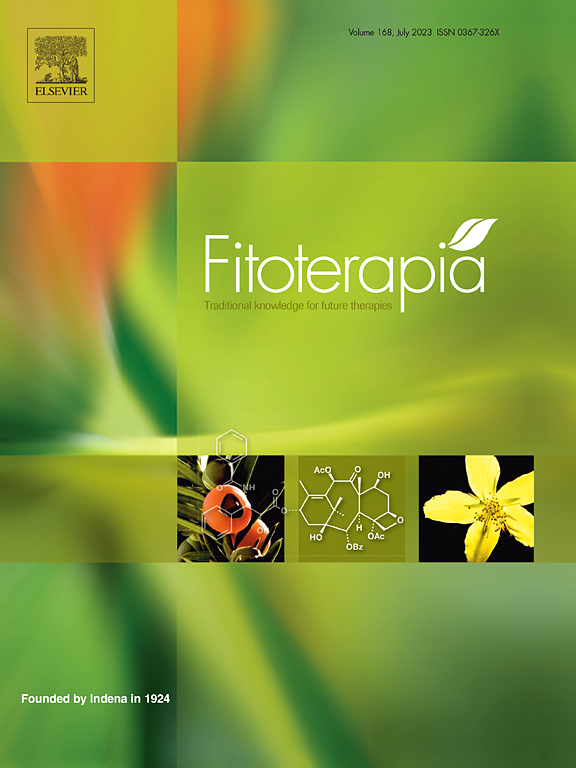
The current situation of Zanthoxylum bungeanum industry and the research and application prospect. A review
2023 Jan Fitoterapia Bao Y, Yang L, Fu Q, Fu Y, Tian Q, Wang C, et al.
As a traditional Chinese medicine, it has the effect of warming the middle and easing pain, eliminating insects, and soothing itching. With the progress of science and technology, recent research has proven that Chinese prickly ash has numerous pharmacological properties and biological activities such as antibacterial, anesthetic, antioxidant, anti-cancer, etc. The application value of prickly ash is also becoming acknowledged by humans.
Review Article Hua JiaoClinical Trials
Clinical trials are research studies that involve people and are conducted to evaluate the safety and efficacy of new treatments or interventions, such as drugs, medical devices, or behavioural therapies.
Study Protocols
Published study protocols are detailed plans that outline the objectives, methodology, statistical analyses, and organisation of a research study that have been made publicly available for others to review and use as a reference.
Presentation Slides

Review Article
Pomegranate and its components could offer considerable potential as dietary supplements or supports in treatment for cardiovascular and non-cardiovascular diseases.
Benedetti G, Zabini F, Tagliavento L, Meneguzzo F, Calderone V, Testai L

Experimental Study
The anthocyanins from the Gardenblue variety of blueberries exhibit strong antiproliferative effects on various cancer cells, especially liver cancer cells.
Zhao F, Wang J, Wang W, Lyu L, Wu W, Li W

Review Article
Saffron plant's various parts contain bioactive compounds that, when extracted using innovative techniques, show significant potential for use in food, nutraceutical and drug formulations.
Bakshi RA, Sodhi NS, Wani IA, Khan ZS, Dhillon B, Gani A

Review Article
Modern extraction techniques improve the extraction of bioactive compounds from black soybeans, which have potential use in functional foods and nutraceutical components.
Kumar M, Suhag R, Hasan M, Dhumal S, Radha , Pandiselvam R, Senapathy M, Sampathrajan V, Punia S, Sayed AAS, Singh S, Kennedy JF

Systematic Review
Consumption of virgin avocado oil, rich in monounsaturated fatty acids and bioactive components, may help manage chronic diseases like hypertension, diabetes, and lower cardiometabolic risk.
Tan CX

Strong bactericidal activity was exhibited by sulforaphene against all strains of Helicobacter pylori.
Sooyeon Li, Sang-Wook Han, Jongkee Kim
Executive Summary
Write an executive summary in the form of a blog article on the topic of "Research into Chinese medicine treatment for Extraction" summarising the research below and using language that can be easily understood by patients and avoiding medical jargon using a professional and caring tone of voice.
Write an executive summary in the form of a blog article on the topic of "Researched Chinese medicine treatments for Extraction" summarising the research below in an objective and easy to understand way, and using language that can be easily understood by patients. Group the article into Chinese medicine treatments first, followed by nutrition and other treatments. Avoid using medical jargon and use a professional and caring tone of voice.
Write me a concise but easy to understand executive summary on the topic of "Chinese medicine treatments for Extraction" based on the following research that I will give you. Your summary should be 2 paragraphs long in Australian English spelling and include references to the studies.
A Review Article published in 2023 in the journal Antioxidants found that Pomegranate and its components could offer considerable potential as dietary supplements or supports in treatment for cardiovascular and non-cardiovascular diseases. The review examines a myriad of recent preclinical and clinical studies focusing on pomegranate. To harness the health benefits of pomegranate, different components were extracted and studied. These include juice from the fruit's edible arils, oil from the seeds, and bioactive products from the typically discarded peel. The research also considers advances in encapsulation and green extraction techniques to optimize the use of waste pomegranate products. The studies suggest promising beneficial effects of pomegranate in diverse areas. Though challenges remain, such as limited oral bioavailability and uncertainty concerning the role of active metabolites, the collective findings offer crucial insight into the significant potential of pomegranate as a dietary supplement or co-therapy for a range of diseases, especially cardiovascular and non-cardiovascular ones.
A Experimental Study published in 2023 in the journal Molecules found that The anthocyanins from the Gardenblue variety of blueberries exhibit strong antiproliferative effects on various cancer cells, especially liver cancer cells. 65 varieties of blueberries were collected, focusing on their nutritional and functional values. Among these, the Gardenblue variety showed the highest anthocyanin content in fresh fruit. This content was further increased through the process of ultrasound-assisted solvent extraction and macroporous resin absorption, transforming it into a dried powder. Biological experiments were then conducted to determine the antiproliferative effects of Gardenblue anthocyanins on various cancer cell strains, such as cervical, liver, breast, and lung cells. Furthermore, these anthocyanins were combined with the chemotherapy drugs, cisplatin and doxorubicin, to assess any potential enhanced antiproliferative effects. The research results confirmed that Gardenblue anthocyanins exert a substantial antiproliferative effect on multiple cancer cell types, particularly hepatoma or liver cancer cells. These anthocyanins displayed no evident toxic effects, as measured by the MTT assay, a laboratory colorimetric technique. Notably, the antiproliferative benefits were amplified when the anthocyanins were combined with doxorubicin, a treatment for liver cancer. Analysis suggests that the anthocyanins might induce cell apoptosis (cell death) by bonding with DNA in a manner that modifies or damages the DNA, thus preventing cell proliferation. This suggests potential application of Gardenblue anthocyanin extract as a functional agent against liver cancer cells.
A Review Article published in 2022 in the journal Applied Food Research found that Saffron plant's various parts contain bioactive compounds that, when extracted using innovative techniques, show significant potential for use in food, nutraceutical and drug formulations. The methodology applied in this research involved the qualitative and quantitative analysis of the bioactive components within the saffron plant, with particular focus on apocarotenoids, anthocyanins, flavonoids, and phenolic compounds. Advanced extraction techniques were employed for increased yield and purity, notably supercritical fluid extraction, microwave assisted extraction, pulsed electric field, and high hydrostatic pressure extraction. These methods lead to a broad range of bioactives predomniantly from the plant's stigma. The findings indicated that all parts of the saffron plant were rich in bioactive compounds. The extracted bioactive compounds presented increased stability, bioavailability, and target delivery when examined via several encapsulation techniques. Beyond this, the extraction has allowed for investigation into the food and pharmaceutical applications of these bioactive components from the saffron plant. However, the utilization of these bioactive components, specifically from saffron floral biomass like petals and corm parts, using techniques such as supercritical fluid extraction, pulsed electric field, and emulsion liquid membrane extraction has not been thoroughly investigated.
A Review Article published in 2022 in the journal Critical Reviews in Food Science and Nutrition found that Modern extraction techniques improve the extraction of bioactive compounds from black soybeans, which have potential use in functional foods and nutraceutical components. These modern extraction techniques involve the application of technologies such as microwaves, ultrasounds, and enzymes. Contrary to traditional methods that depend on simple yet toxic solvents, these contemporary options yield higher amounts of bioactive substances from black soybeans, are quicker, and are less damaging to the environment. The exact bioactive compounds extracted include anthocyanins, phenolic acids, isoflavones, and flavones, among others. Researchers discovered that black soybeans, and specifically their seed coat, are rich in various bioactive compounds. These compounds have been reported to possess numerous health benefits, showing antioxidant, anti-cancer, anti-diabetic, anti-obesity, anti-inflammatory, cardio and neuroprotective activities. The study also explores how these soybean extracts have been used in the manufacture of food products like noodles, in the development of biodegradable films with pH sensitivity, and in therapeutic applications such as promoting wound healing and alleviating inflammation. The comprehensive review, therefore, serves as a handy reference for food manufacturers and scientists, showcasing the vast potential of black soybeans in the development of functional foods and nutraceuticals.
A Systematic Review published in 2019 in the journal Journal of Functional Foods found that Consumption of virgin avocado oil, rich in monounsaturated fatty acids and bioactive components, may help manage chronic diseases like hypertension, diabetes, and lower cardiometabolic risk. The research paper is a review that explores various extraction methods developed for producing virgin avocado oil (VAO) and the oil yields for these methods. It additionally details the physicochemical composition of VAO, focusing specifically on its high concentration of monounsaturated fatty acids and bioactive components, such as α-tocopherol and β-sitosterol. The results discussed indicate that VAO, which is mainly composed of oleic, palmitic, and linoleic acids, can be utilized as a functional oil offering potential health benefits. In particular, the intake of avocado oil could aid in managing conditions like hypercholesterolemia, hypertension, diabetes, and fatty liver disease, taking advantage of its rich composition. Furthermore, it was noted that the oil could also reduce cardiometabolic risks and exhibit properties that can combat microbial activity.
A published in 2016 in the journal Journal of Functional Foods found that Strong bactericidal activity was exhibited by sulforaphene against all strains of Helicobacter pylori. Sulforaphene (SFE), one of the major ITCs in radish seeds, specifically exhibited a strong effect against the multidrug-resistant H. pylori strain 212 with a MIC90 (0.6 µg/mL). Methicillin-resistant Staphylococcus aureus was also susceptible to SFE treatment, with MIC90 values of 12.5–25.0 µg/mL, but not methicillin-susceptible S. aureus. This observation gives new insight into the potential of SFE as a medicinal resource in foods and has implications in the development of new functional antimicrobial agents.
Moderation Tools
Topic
Sign In
Users not signed in are limited to viewing the 5 most recent items of content.
